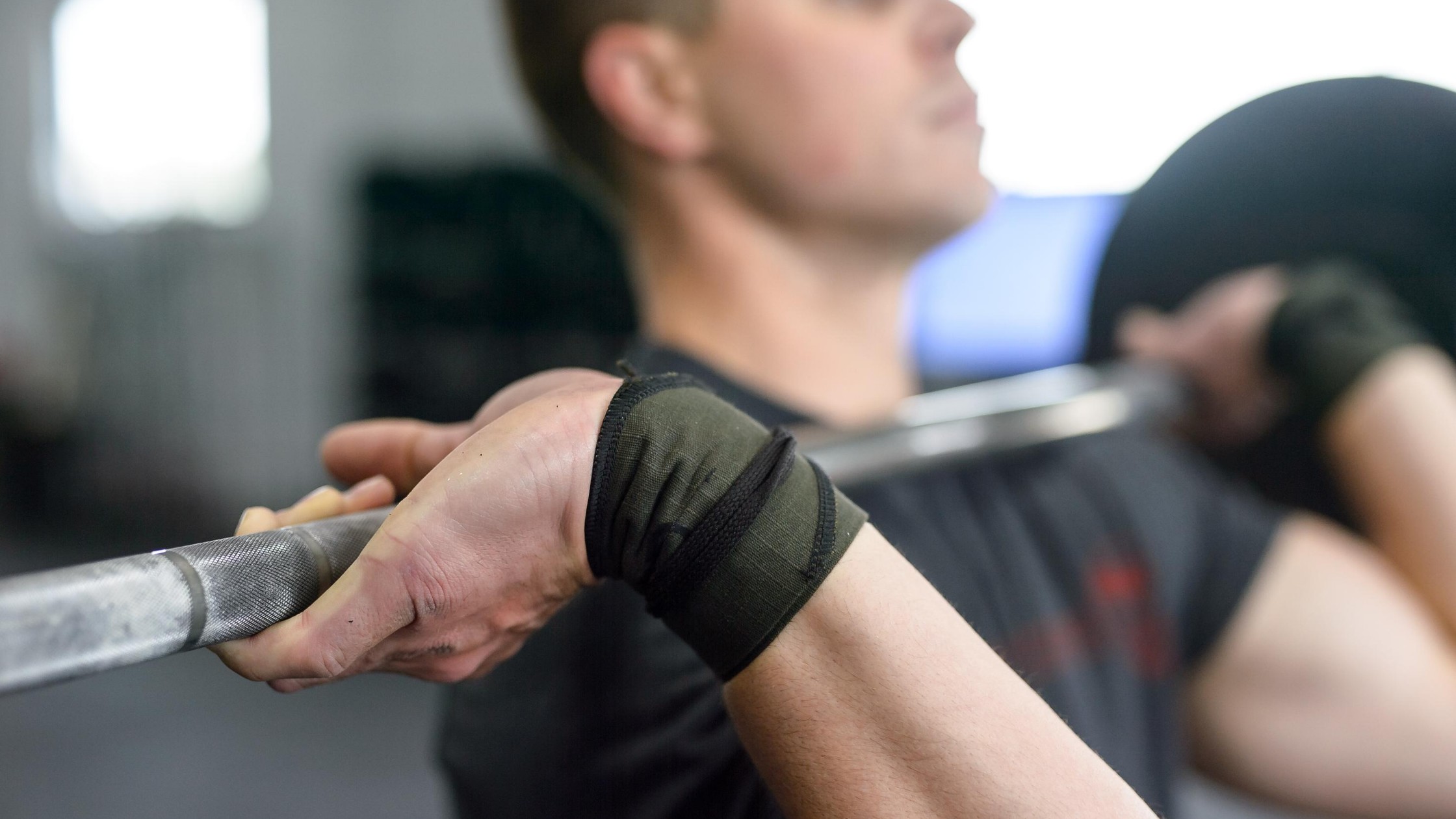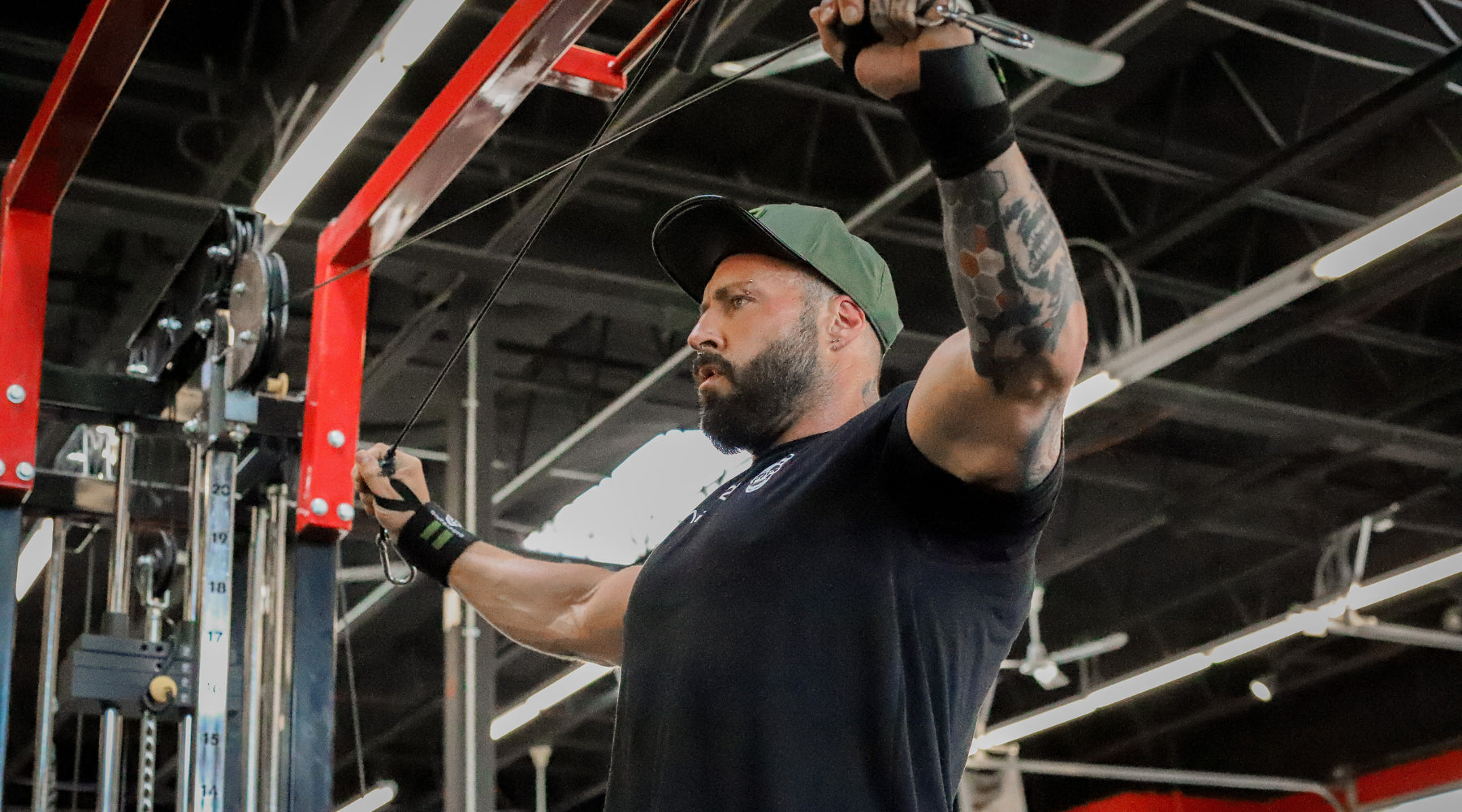So you need support and stability to set your new personal best on your next clean and jerk? Or maybe you’re working on a new deadlift max. Whatever your game plan is, saving your lower back from excess stress and weakness is a top priority.
If you’re looking for a replacement weightlifting belt or maybe you’re just getting started with CrossFit, we have our breakdown on the best weightlifting belt for CrossFit.
Our recommendations will be based on components like material, support, and durability, and not necessarily on the different brands available. In this guide, we’ll cover topics like what classifies as a CrossFit belt, should you use a belt, the different kinds of weightlifting belts, and what to look for when buying a CrossFit lifting belt.

Buy a Quick-Lock Crossfit Belt
What is a CrossFit Weightlifting Belt?
A CrossFit weightlifting belt is a supportive accessory that wraps around the abdomen. Before discussing details, let’s briefly back up a little bit to cover what CrossFit is all about.
CrossFit features a lot of functional movements that are pretty intense. So, you’re probably seeking a belt that will be versatile and quickly adaptable to the type of workouts you’ll be doing during WOD, right?
You need a weightlifting belt that has the support and stability no matter if you’re lifting, running, climbing, jumping, or pushing.
The primary purpose of a CrossFit weightlifting belt is to provide intra-abdominal pressure (IVR), which offers more back support and stability.
This allows you to perform powerlifting or dynamic movements (such as Olympic or overhead lifts) with better control and form (1).
A weightlifting belt comes in two main material types — leather and nylon. For more flexibility and less stiffness, most CrossFit athletes choose a weightlifting belt made out of nylon material. Nylon weightlifting belts feature a Velcro strap or a self-locking feature that’s easy to adjust and ensures a tight fit.
Should you Use a CrossFit Lifting Belt?
The answer to this question is: it depends. Assessing your own needs should be the driving factor behind your decision. If you’re looking for equipment that provides safe support and performance during CrossFit or powerlifting movements, then yes, you should invest in a weightlifting belt.
There are plenty of people that don’t wear a weightlifting belt because they feel like they already have excellent core stability and control, something that a weightlifting belt maintains.
Should you wear a lifting belt in CrossFit?
In the situations where a WOD is kicking your ass, you know that your lifting form also takes a beating. So having a weightlifting belt that helps engage your core and provide back stability (through proper breathing technique requiring IVR) can make a big difference.
Proper form should always be a top priority, and a weightlifting belt can help guide your form as you breathe into the belt while lifting.
It’s been shown that through the use of a weightlifting belt and the intra-abdominal pressure technique, a lifter can increase the safety and speed of an exercise (like a deadlift) (2).
Ultimately such studies prove that a weightlifting belt can make you a stronger and more efficient lifter. So if you need extra support and a way to increase performance, then consider a weightlifting belt.

Leather Belt vs. Nylon Belt
What type of weightlifting belt is best for CrossFit? Earlier, we mentioned that there are two main types of weightlifting belt materials. First, let’s cover the leather weightlifting belt option, which features a buckle or lever option for fastening. Leather is known to be more rigorous, hence giving more support during deadlifts or squats.
Genuine leather weightlifting belts tend to lack a lot of flexibility, which is why they’re often used in powerlifting versus fast-paced environments like CrossFit. The one drawback of using a leather weightlifting belt in CrossFit is that it can limit the range of motion and breathing during WODs.
On the other hand, nylon lifting belts provide versatile support due to the material elasticity and easy-to-adjust Velcro strap. A nylon weightlifting belt is typically preferred by Olympic weightlifting and CrossFit athletes because it gives a perfect fit without a bulky buckle or lever, and can be loosened (or ditched) quickly between fast-paced movements.
There are a few downsides to owning and using a nylon belt, which is not to say they’re exclusive to nylon belts. Because the material is less rigid than leather, it can break or pop off during a lift. The other disadvantage is that the Velcro strap can break if it doesn’t feature reinforced stitching, which can be a hassle. Ultimately, it’s up to you to test out either option to see what works best for you.
A great alternative to circumvent the issue is to invest in a Quick-Locking Lifting Belt that features a locking roller and a Velcro strap for reinforcement.
A quick-lock belt provides even coverage throughout and is intended for CrossFit athletes, Bodybuilders and Powerlifters.
A quick-locking belt allows you to lock and unlock quickly as you move through various movements. There is no extra time wasted with adjusting and buckling, simply strap in you're good to go. When you're ready to release, the roller buckle releases tension without the need to fully shed the belt.

What to look for when buying a lifting belt
Luckily, we can help you make the right decision even before you test out either option of support. There are a few ways to help narrow down your search. First, look for a belt that will last you for a long time.
The second (and almost as important) aspect is comfort. If you know you’ll be needing support during WODs, then avoid a belt that will get it the way, causing you to stop and readjust. Avoid a belt that will slow you down or won’t move with you as you navigate through your moves.
Getting the right size of belt matters. Use measuring tape and start to measure at your belly button for the accurate size of the belt.
Remember to do this while wearing clothes for the most accurate measurements. There is one common factor to look for whether you end up with a leather or nylon weightlifting belt — and that’s quality. Common indicators of a quality belt are material durability and stitching.
You don’t want to skimp out on a belt that you’ll use almost daily for it to give out on you after a few uses. You can find quality and durability our belts. They're made for cross-training, CrossFit, compound movements, and more.
References
- Horschig, V. (2016). How to Breathe when Squatting. Retrieved 2 June 2021, from https://squatuniversity.com/2016/02/12/the-squat-fix-core-stability-proper-breathing/
- EA, H., RM, R., PN, F., & GA, N. (1989). Effects of a belt on intra-abdominal pressure during weight lifting. Medicine And Science In Sports And Exercise, 21(2). Retrieved from https://pubmed.ncbi.nlm.nih.gov/2709981/












Hinterlasse einen Kommentar
Alle Kommentare werden vor der Veröffentlichung geprüft.
Diese Website ist durch hCaptcha geschützt und es gelten die allgemeinen Geschäftsbedingungen und Datenschutzbestimmungen von hCaptcha.